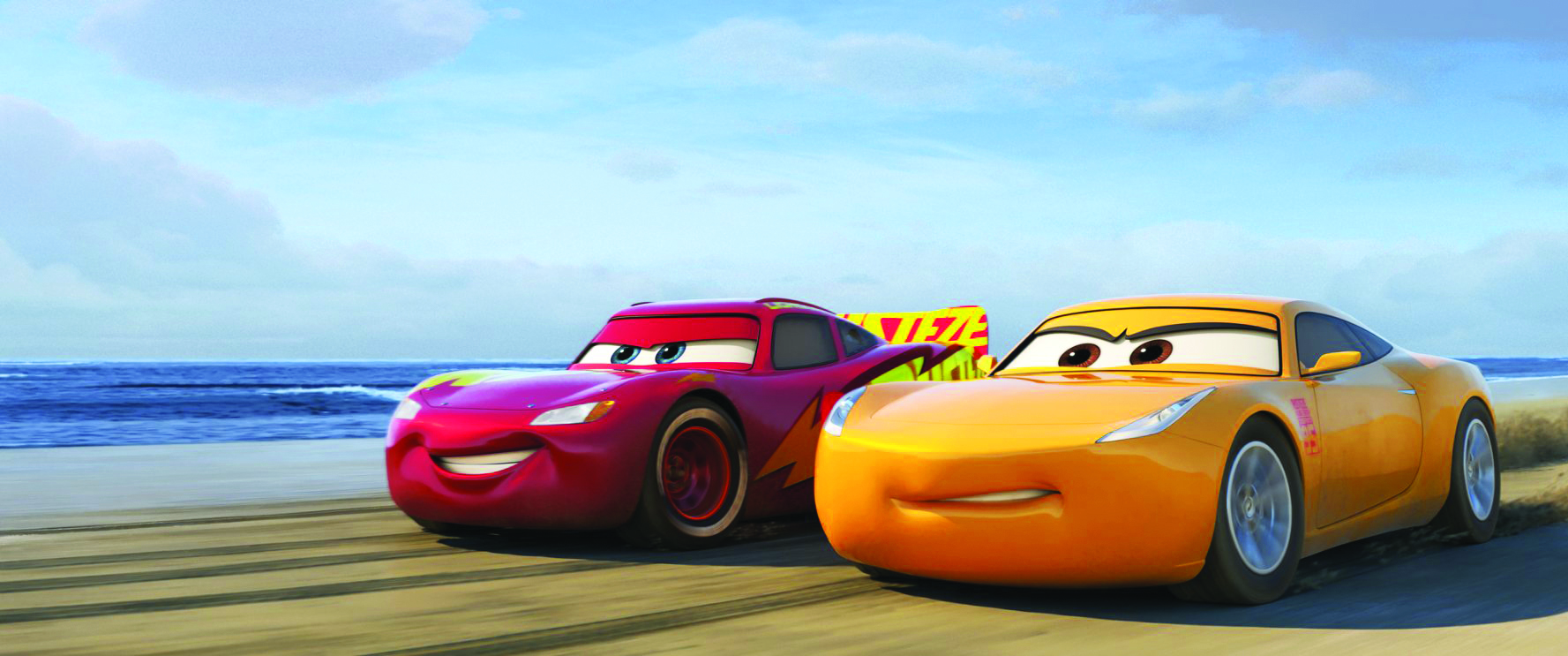By Richard von Busack
After the spy movie satire in Cars 2, Cars 3 is back to letting the characters drive the narrative, instead of just having the characters drive.
Candy-apple-red sports car Lightning McQueen (voiced by Owen Wilson) crashed and lost. Now he’s sulking in his garage in Radiator Springs in his primer paint, hanging out in his underwear. He’s mocked on television as a has-been, denounced by statistical analyst Natalie Certain (Kerry Washington), who flaunts metrics to prove that Lightning is finished, compared to “the next generation of high-tech racers.” The arrogant new favorite, Jackson Storm (Armie Hammer) calls out to Lightning: “You had a good run. Enjoy your retirement.”
Lightning faces his residual years selling endorsements for mudflaps. At his new office, the trainer Cruz Ramirez (Cristela Alonzo) pushes the aging car to overcome his post-crash nerves. Her own buried ambitions to be a race car emerge during their time together. Lightning and Cruz drive out to explore the southern dirt tracks where Lightning’s mentor Doc Hudson (Paul Newman) once raced; it gives the background animators the chance to create some moody Smoky Mountains landscapes. Flashbacks to the first Cars show how much more visually sophisticated Pixar has become in the span of a decade.
Newman’s voice outtakes from the first Cars are used to underscore the theme of obsolescence: “There was a lot left in me … I never got the chance to show ’em.” Hopefully, these weren’t Newman’s feelings at the end of his career. It’s fair to speculate that there’s an autobiographical angle here, regarding the elders at Pixar’s feelings about the bitterly competitive field of animation.
Cars 3 is an endorsement of the craft of teaching, but that theme seems slight and secondary compared to the trauma of obsolescence. Time passing one by is a regular theme in Pixar, though it may never have been so strongly emphasized.
Children have a lot of anxieties. Is being old and surpassed really one of these traumas? Can this subtext be as interesting to them as the shiny talking cars with their big glassy eyes speeding around the track, as in the rote last 20 minutes? Strange, though, that there should be such personal elements in Pixar’s most impersonal franchise.











